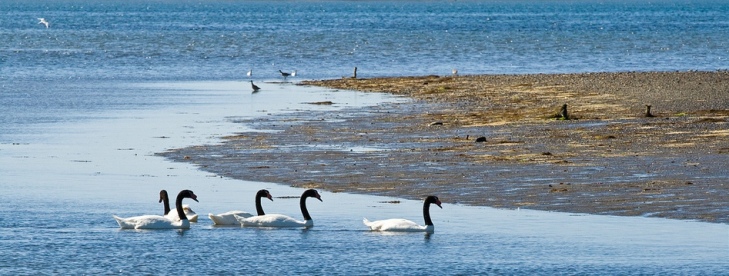Home Sweet Home

Black-necked swans are found only in South America, spread throughout four countries:
As mentioned in the nutrition section, these swans are omnivores, feeding mostly on submergent plants such as stonewarts and pond weeds, while also eating some aquatic insects and fish spawn. Since the swans rely on a mostly vegan diet, they require a high intake of food each day. The potential drain of resources this lifestyle can result in forces this swan to reside in areas that have an overabundance of aquatic vegetation. The black-necked swan occupies wet regions due to the immense difficulty it encounters attempting to walk on land. The legs of this bird are placed so far back on its body that it is practically unable to walk on dry land.
*Map courtesy of Matt Rosenberg, Geography at About.com http://geography.about.com
